Episode #395: Visual Patterns That Lead to Algebra: Designing Math Tasks That Surface Student Thinking
LISTEN NOW HERE…
WATCH NOW…
Are we underestimating what young math learners can do with algebra — just because they’re young?
If you’ve ever watched a student skip the reasoning and jump straight into “finding the answer,” you’re not alone. In this episode, Yvette Lehman shares a raw, real experience that started with a misstep and turned into a breakthrough. Through a single change in how she worded a math prompt, she unlocked deeper thinking and powerful generalizations — from 10-year-olds. Whether you’re a math educator, coach, or just curious about how to get students thinking beyond procedures, this story will resonate.
You’ll discover:
- How tweaking your questioning might be the game-changing move your students need
- How math task wording can unintentionally trigger misconceptions in developing math thinkers
- How to support students who are learning to generalize patterns involving indirect variation
- How to adjust math tasks to surface conceptual understanding—not just rule-following
- The value of student work moderation to support teacher learning and next steps
- Why visual patterns are a powerful tool for diagnosing and extending math thinking
Hit play now to hear how small shifts in language can lead to big mathematical breakthroughs — even for your youngest learners.
Attention District Math Leaders:
Not sure what matters most when designing math improvement plans? Take this assessment and get a free customized report: https://makemathmoments.com/grow/
Ready to design your math improvement plan with guidance, support and using structure? Learn how to follow our 4 stage process. https://growyourmathprogram.com
Looking to supplement your curriculum with problem based lessons and units? Make Math Moments Problem Based Lessons & Units
Be Our Next Podcast Guest!
Join as an Interview Guest or on a Mentoring Moment Call
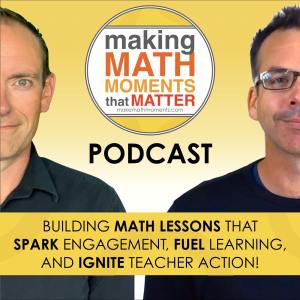
Apply to be a Featured Interview Guest
Book a Mentoring Moment Coaching Call
Are You an Official Math Moment Maker?

FULL TRANSCRIPT
Yvette Lehman: up all night earlier this week, John, thinking about my failed math experience that I had working with a couple students last week that are like, let’s say, fourth and fifth grade learners, okay? So they’re going, actually going into fifth, going into sixth. So there 10, these kids, okay? So,
Over the summer, I was like, we’re gonna spend time on visual patterns. And so I have my son and a friend’s child and I’m just like, every week we’re work through a pattern and we’re just gonna pick a different visual pattern and we’re gonna commit to this for the summer. So I had them with me last week and I’m gonna try to share the pattern with everybody the best I can. I’m gonna describe it to everybody. So if you are familiar with the pool problem,
There’s a lot of patterns like this where essentially it’s like you have these shaded areas in the middle. That’s the pool. And then you have these white tiles around the pool. Okay. So there’s different versions. Yeah. So there’s these different versions of the pool problem. So in vision, you know, you have the shaded out tiles in the middle. That’s the water. And then you have white tiles going around the outside, around the perimeter. Okay. Yeah, exactly.
Jon Orr: Right. Yep. Rectangles. Yep, just a bunch of squares. Some of them are shaded.
Yvette Lehman: Exactly. And they make exactly like you said, rectangles. OK, so the one that we worked on last week that kept me up because I’m going to explain why it was a huge fail is essentially you have in the first pool a single water tile and then you have eight white tiles around the outside.
Jon Orr: So like, so you, all the way around. So all like, all edges have a white tile attached to the shaded tile, but all corners, like vertices also are touching a vertice of a white tile. So you’ve got this like, really you have a three by three grid, and the center is shaded. Got it.
Yvette Lehman: is the pool. That’s the water, exactly. In the second pool of this pattern, you have two water tiles in the middle and they’re organized horizontally, and then your white tiles going around the exterior to make a rectangle. And then in the third pool, you have three water tiles horizontally, and then the white tiles are going around the exterior making a rectangle.
Jon Orr: Yep, a bunch. All right, what we’ll do also is we’ll put a screenshot of that pattern up on the website. So if you’re listening to this right now, can open up your podcast platform, click the show notes link. It’ll take you to the webpage that has the details about the episode, but it also will have the picture of this pattern there and the other patterns that we do here. Okay, cool.
Yvette Lehman: Okay. So I’m going to tell you the wording for the prompt. It said, if you were to continue this pattern, how many white tiles would there be in figure 10, figure 20, figure 50? Okay. So I worked with these two students separately. Okay. So I started with one learner and I asked her this question. I was like, okay, how many tiles would be, you know, around the 10th pool, the 20th pool, the 50th pool? And this is what she did.
She counted the tiles and she wrote the number of white tiles above the visual. So for the first one, she was like one, two, three, four, five, six, seven, eight. Then she went to the second pool and she was like 10. And then she went to the third pool and she was like, there’s 12.
Jon Orr: All right, so like in one, she wrote like eight. Yep.
Yvette Lehman: she recognized, so remember this is a 10 year old, she recognized that this pattern was increasing by two. So she was like, forget the pools. Okay. I’m just going to keep counting by two. So she extended the pattern to the 10th pool and she got 26 tiles. Okay.
what do you think she did to get to the 20th pool? She did. And I was sweating, sweating because I was like, because this is, this is why I was sweating because I understood her thinking and developmentally it was completely appropriate. Like she was thinking proportionally. She was like, I’m just going to scale this. Like I imagine that the
Jon Orr: She times it by two. Hahaha! Why were you sweating?
Yvette Lehman: the 20th pool is gonna have twice as many tiles as the 10th pool. But then I’m also thinking, okay, but this is developmentally appropriate for her for sure, but also like a major misconception that is going to potentially become problematic as she moves into later elementary. The other reason I was sweating was because in the moment I was struggling
to not funnel her to the procedure. Like I didn’t wanna do things like, well, back up to pool zero, you know, or like I did, or like, what’s the rate? You know, this is an indirect variation, so you can’t double, you can’t scale it.
Jon Orr: How do you explain it? Yeah, yeah, Like, why zero? Yeah, yeah, yeah.
Yvette Lehman: So then I was up all night. So now I’m curious. I’m going to tell you, John, I approached this differently with the second student the next day. I did.
Jon Orr: You did the setup differently?
Yvette Lehman: And I’m wondering if you can anticipate how I changed my prompt. So remember, and I did. So remember in this one, it originally said how many white tiles would be in figure 10, figure 20, figure 50.
Jon Orr: You changed the wording. I see. Here’s my prediction. As I know you and you know me, and you know I think how we sometimes approach patterning problems when we actually create them, is my guess is you didn’t say how many, you said what does figure 20 look like?
Yvette Lehman: 100%. So I actually started of course with figure 10, right? So, right, right. So I was like, okay, forget about the number of tiles. I don’t care about the number of tiles right now. I just want you to visualize the 10th pool.
Jon Orr: Right, sorry, 10. What does 10 look like?
Yvette Lehman: And so when I did this with the second student, they were like, well, I know there’s going to be 10 water tiles across the middle, because in one there’s one water tile and two there’s two water tiles and three there’s three water tiles. So I know that in the 10th one, there’s going to be 10 water tiles across the middle. So then he said there will be 10 white on top, 10 white below, below, and then three on each side. Okay.
So then I said, okay, well, what can you now visualize? So I asked him then, okay, how many tiles is that? And he was like, well, it’s 10 plus 10 plus six. So then I was like, okay, now can you visualize the 20th pool? And I said, don’t even draw it, just close your eyes and picture it in your mind. And do you know that his gut right away, he’s, no, at first he was like, I think it’s gonna be 52.
He also wanted to double it, but then he was like, but let me check. So then he visualized it and he was like, okay, I’m gonna visualize it. It’s 20 on top, 20 on the bottom. Okay, plus six, it’s gonna be 46. And then I was like, could you do 50? Could you do 13? Could you do 27? Could you do 184? And it’s like, no matter which pool I gave him. So then I said, and remember this is a 10 year old. I said to him, could you write an expression that would work for any pool? And this was my favorite part. because this is why kids are amazing. What do think he wrote?
Jon Orr: and express, like I guess I’m trying to think whether he, his experience with actual expressions are, but I would say it’s in words, right? Is it words? Like it was just like, you know, you’re gonna add, no, I’m actually stumped here, what they would, what he would write as a 10 year old.
Yvette Lehman: Right. So I was like. So at first he said to me, it’s pool number plus pool number plus three plus three. because if it’s like the 10th pool, it’s like the pool number plus the pool number plus three plus three. So then I was like, well, could we represent pool with P?
Jon Orr: It’s the pool number plus the pool number plus three plus three. Yeah, I like it.
Yvette Lehman: So then I said to him, what if pool was P? So he wrote P plus P plus three plus three. And I was like, imagine I had just funneled him to two P plus six.
Jon Orr: Sure, love it. Well, how would you have funneled them to 2P plus 6, though? You’re like, hey, let me just show you how to do this.
Yvette Lehman: I feel like I’ve done this with my sixth graders where it’s like, don’t spend time in the visual pattern. I don’t spend time with them making the connection between the relationship between, you know, in this case, the pool number and the number of tiles. And I just tell them tricks like, you know, go to the initial, throw it into a ratio table, go to zero, see what the initial value is, look at the rate, that’s gonna be your, where in this case, it’s like he generalized.
Jon Orr: Right. Right. So you’re saying those are the moves you make probably because you’ve already talked about how the rate relates to an expression and how the zero row or the zero term relates to an expression and all the pieces that actually make a linear equation. You’re saying, I’ve already probably done that work, so when I do a visual pattern, well then it’s easy to say, well what’s the rate? Now write it in the equation, because you already know where rates fit. in the formula, you know, in the structure. Is that, is that true?
Yvette Lehman: well. And that was my, that was my trouble with these 10 year olds is that I knew they didn’t know any of that. Like they didn’t have any of that experience, but I believed that they had the potential to access this problem, functionally. So I was like,
Jon Orr: Sure. Now here’s a question, and I think it’s likely, is do you feel like you got a sense of when you talked about what happens if it’s P? The fact that they wrote pool plus pool plus three plus three, obviously amazing, but then it’s like, okay, now do we really know what the P means?
Yvette Lehman: think that in this case, it’s like the P was like the figure number or the pool number. And that I think, but again, like that’s a great question. And so we actually did the another one, like the next day to kind of consolidate this. So I think that, I think that yes, with that student, they understood that it’s like the position in the pattern. So if this was the 20th pool in the pattern,
then the number, I would basically insert the number 20. So it’d be 20 plus 20. If it was the 13th pool in this pattern, it would be 13 plus 13. Yeah, I definitely under, I think that there was an understanding between the relationship of the position in the pattern and what they meant by pool number.
Jon Orr: Yeah. Yeah. Okay, what do you feel like is Jake your biggest epiphany from this experience?
Yvette Lehman: I think that my epiphany was one, changing the wording. Like it was like almost by asking the question the way that it was originally written by the number of tiles, it almost funneled students to pull the numbers out of the visual. Like it’s almost like by the third figure, they weren’t even looking at the shape of the pool anymore. They were just going right to a numeric pattern. And by wording it that way, I think you lost the opportunity to leverage the spatial. So that was my big takeaway, like one of my big takeaways.
Jon Orr: I’m, because I was thinking it’s like, okay, so the fact that you changed the, here’s, think the progression that happened here is that you gave the problem with one student, you realized that you got stuck in a position where I had to funnel them to get to the answer that I wanted them to obviously know about the mathematics and how to solve a problem like this. So then you went back to the drawing board and said, how do I adjust this?
to get more thinking out and that they could then access this level of mathematics without the pre-knowledge that was required for me to do the funneling. So like, I’m wondering is like, is the epiphany, because I feel like the epiphany here that I’m hearing is that, because you keep saying that these are 10 year olds now that have done this work and they’ve written an equation and sometimes our eighth graders are.
teachers are right now going like, I can’t get my eighth grader to do that or my seventh grader to do that or my ninth grader to even do this sometimes. So it’s so I’m wondering if the epiphany is like, you can get kids to access higher level mathematics by making some some tweaks. It’s like, we’re sometimes we make assumptions that kids can’t get there yet. It’s like we can’t do that problem yet. Because they’re not that’s an eighth grade problem, instead of a sixth grade problem.
Yvette Lehman: 100%. And that’s so I went back to the first student, right? Cause I felt like I had, I didn’t do a great job with her. Like we realized that she couldn’t just double the number of tiles, but I didn’t walk away feeling like she understood why, right? Like it’s like she ended up, you know, extending the pattern by counting to say like it’s not 52, but why it wasn’t 52, I hadn’t really consolidated. So I went back to her and I gave her a new problem.
And this one is the same idea. It’s a pool. But imagine now, visualize that inside the water is a square number. So it’s like, it’s one, it’s four, it’s nine. Like it’s going to be a square every time. And whites around the edge to make a square or like a rectangle. Yeah. So what was really cool about the second time that I did this with the first student, I did the same thing. I asked her, but I said,
Jon Orr: Mm-hmm. Okay. Mm-hmm. Yep. And then whites around the edge. We’ll put this in the show notes too. Yep.
Yvette Lehman: draw me the 10th pool. Like I actually want to see what the 10th pool looks like. And she didn’t go there right away, but she started to focus on the water and she realized by like the fifth or sixth that they were squares. And she was like, every time the inside is going to be the pool number times the pool number, like every time. So then I was like, well, what about the 10th pool?
And she’s like, well, it’s going to be 10 by 10. There’s going to be a hundred water tiles in the middle. So then I was like, okay, well with that information, can you figure out how many whites there are going to be? And this was what was really cool. She was like, okay, there’s going to be 10, 10, 10, 10, and then always four in the corners. Like every time. So then we went back to her doubling strategy and we figured out why she couldn’t double.
And basically what she figured out is that what was happening is she was doubling the dimensions of that square, but she was also doubling the corners when in reality the corners were always four. Like it’s like, she was like, so originally, you know, it’s like, it’s 44 for 10. It’s not 88 for 20 because it’s actually, you know, the inner circle can double.
but then the four is always going to stay four. It’s like four every single time. So then we realize like there is a part of this pattern that is proportional where we can double, we can double the parts that are touching, but then we always just have to add four. And this is a 10 year old who was telling me this, like she was coming to these conjectures on her own by really living in the visual of this pattern and not extracting the numbers.
Jon Orr: Yeah, it’s, you know, I think what you’re experiencing is the power of the visual pattern to explore linear relationships, nonlinear relationships, proportional relationships. And the fact that we allow students to say, like, take some wording, tweaking the wording to say, let’s not focus on the number, let’s focus on the visual, gets at the strategies.
that students are using to then say extrapolate and go like, what is the 10th of love, you know, the 11th, the hundred, the 150th thousands look like, and then using that knowledge of the visual to help build it. Because what I love about this is that one student said it’s, and I, and again, this is going to be hard probably to start because if you’re not looking at the pattern, right, it’s hard to hear like why it was, you know, pool number plus pool number plus pool number plus pool numbers, like four pool numbers.
Then plus four because you you’re not seeing the exact because you’ve got that group of three in the middle which is the pool number or that the group of nine which is you know pool times pool so the square of the pool number but but what I love is is that some other student like I don’t know if the second student visualized it the same way maybe I should ask you that before I share because it’s like that’s the benefit is because the next student might not say that it’s four pool numbers
for the whites, mean, four pool numbers plus four in the corner. They might say it’s like, well, I’ve got pool number plus two plus another pool number plus two plus pool number plus pool number, right? Because they’re going this top row plus this bottom row. Because the person, remember in the first problem, you were articulating that they were saying it’s like, figure two was like four and four and plus one and one. And then it was like five and five and one and one.
and then like, you know, it’d be seven and seven and one and one. Like, the beauty of that is that now you get an opportunity to talk about equivalent expressions. Like if you do write it as an expression, like yours is different than mine. Your formula is different than my formula. And how is that possible? You know, like how can we prove that? Like what does it look like? And then this is actually how we begin. Like it’s funny, because.
Cause you think that you wouldn’t use visual patterns to introduce algebra, but it’s like, it becomes the reason that algebra becomes really important is to show like these are equivalent and we can use say some algebra techniques to show the equivalency is that, you know, by combining like terms and talking about that, like this is how I’ve always began my say algebra unit is to really tie it all into, you know, linear equations and nonlinear equations, not patterns, sorry, patterns and nonlinear patterns.
Yvette Lehman: So think this is our call to action to, if like me, you love visual patterns, but sometimes you forget about them or get distracted by all the other amazing ways to support student learning, maybe try a few, even yourself, like as an adult. Like I think it’s a good exercise for ourselves to see them.
Jon Orr: Well, would, for sure. I would go one step further. You committed to doing one patterning problem a week, a day, a week, right? A week with those students for the summer. What I would do is you take 15 minutes, 10 minutes and commit to saying, I’m gonna do one patterning problem, one visual patterning problem to start my lessons a week for the first six months or the first three months or maybe, if you’re not in the patterning unit, it’s okay. You know, it’s okay because by the time you get to the patterning unit, you’ve already done it, right?
Yvette Lehman: I think that the reason maybe I love them so much and I know you do as well is I often talk about, and I mean, there’s research out there, right? Like taking shape talks about the research around spatial sense. And it’s like spatial sense is one of the earliest indicators of later mathematics achievement and proficiency. And so this is a great way to blend, you know, even for early learners, it’s like, we’re looking at counting, we’re looking at patterns, we’re looking at
you know, changes and shapes. So I think that it’s like time well spent. My go-to website, I’m sure many of our listeners as well is visualpatterns.org. It’s kind of my go-to. And what I did actually is I actually wanted to live in these particular types of patterns, linear patterns with an indirect variation. And so I just kind of looked through all of the patterns on the website and I pulled eight. you know, that that fit the goal that I had for our learning for this summer, which was to generalize this particular type of growing linear pattern.
Jon Orr: Right. Awesome. Yeah. Visualpatterns.org. Head there. We’ve often referenced it here on this podcast in previous episodes. The creator of that website is Fawn Nguyen. You can listen to her episode with Kyle and I on episode 259, Visual Patterns and Practice Standards, a conversation with Fawn Nguyen. Go check that out. But great resource there. Build that into the work that you’re doing. And we would love to hear about your progress, your pebbles, and your wins.
Thanks For Listening
- Book a Math Mentoring Moment
- Apply to be a Featured Interview Guest
- Leave a note in the comment section below.
- Share this show on Twitter, or Facebook.
To help out the show:
- Leave an honest review on iTunes. Your ratings and reviews really help and we read each one.
- Subscribe on iTunes, Google Play, and Spotify.
DOWNLOAD THE 3 ACT MATH TASK TIP SHEET SO THEY RUN WITHOUT A HITCH!
Download the 2-page printable 3 Act Math Tip Sheet to ensure that you have the best start to your journey using 3 Act math Tasks to spark curiosity and fuel sense making in your math classroom!
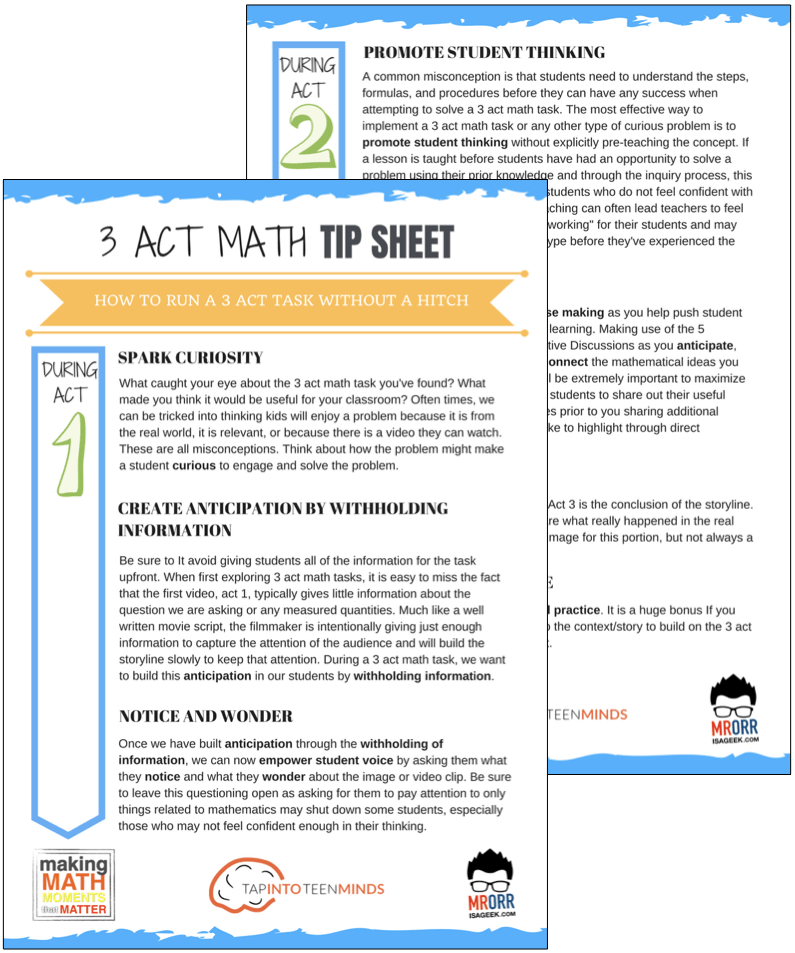
LESSONS TO MAKE MATH MOMENTS
Each lesson consists of:
Each Make Math Moments Problem Based Lesson consists of a Teacher Guide to lead you step-by-step through the planning process to ensure your lesson runs without a hitch!
Each Teacher Guide consists of:
- Intentionality of the lesson;
- A step-by-step walk through of each phase of the lesson;
- Visuals, animations, and videos unpacking big ideas, strategies, and models we intend to emerge during the lesson;
- Sample student approaches to assist in anticipating what your students might do;
- Resources and downloads including Keynote, Powerpoint, Media Files, and Teacher Guide printable PDF; and,
- Much more!
Each Make Math Moments Problem Based Lesson begins with a story, visual, video, or other method to Spark Curiosity through context.
Students will often Notice and Wonder before making an estimate to draw them in and invest in the problem.
After student voice has been heard and acknowledged, we will set students off on a Productive Struggle via a prompt related to the Spark context.
These prompts are given each lesson with the following conditions:
- No calculators are to be used; and,
- Students are to focus on how they can convince their math community that their solution is valid.
Students are left to engage in a productive struggle as the facilitator circulates to observe and engage in conversation as a means of assessing formatively.
The facilitator is instructed through the Teacher Guide on what specific strategies and models could be used to make connections and consolidate the learning from the lesson.
Often times, animations and walk through videos are provided in the Teacher Guide to assist with planning and delivering the consolidation.
A review image, video, or animation is provided as a conclusion to the task from the lesson.
While this might feel like a natural ending to the context students have been exploring, it is just the beginning as we look to leverage this context via extensions and additional lessons to dig deeper.
At the end of each lesson, consolidation prompts and/or extensions are crafted for students to purposefully practice and demonstrate their current understanding.
Facilitators are encouraged to collect these consolidation prompts as a means to engage in the assessment process and inform next moves for instruction.
In multi-day units of study, Math Talks are crafted to help build on the thinking from the previous day and build towards the next step in the developmental progression of the concept(s) we are exploring.
Each Math Talk is constructed as a string of related problems that build with intentionality to emerge specific big ideas, strategies, and mathematical models.
Make Math Moments Problem Based Lessons and Day 1 Teacher Guides are openly available for you to leverage and use with your students without becoming a Make Math Moments Academy Member.
Use our OPEN ACCESS multi-day problem based units!
Make Math Moments Problem Based Lessons and Day 1 Teacher Guides are openly available for you to leverage and use with your students without becoming a Make Math Moments Academy Member.
Partitive Division Resulting in a Fraction
Equivalence and Algebraic Substitution
Represent Categorical Data & Explore Mean
Downloadable resources including blackline masters, handouts, printable Tips Sheets, slide shows, and media files do require a Make Math Moments Academy Membership.
ONLINE WORKSHOP REGISTRATION
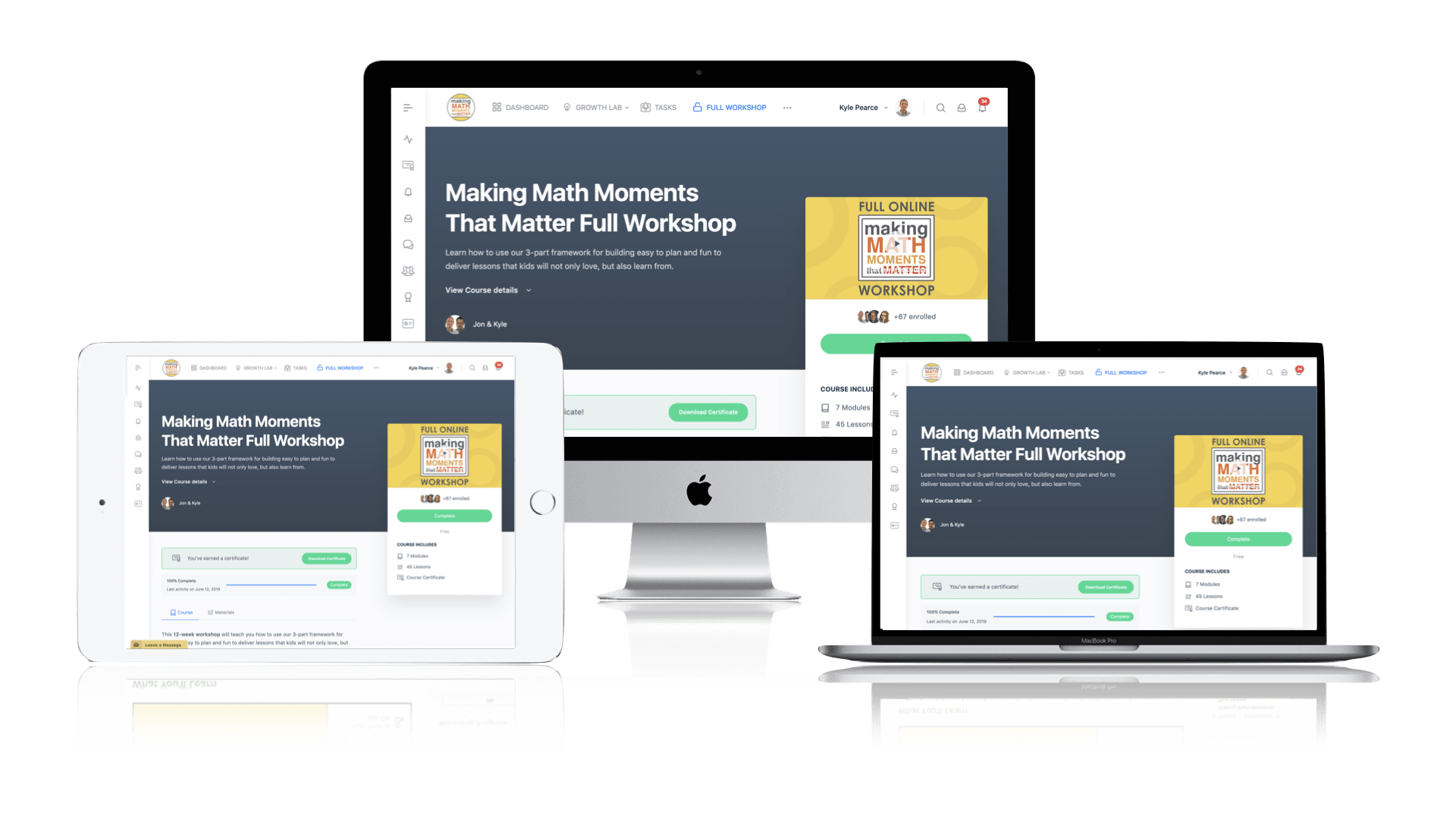
Pedagogically aligned for teachers of K through Grade 12 with content specific examples from Grades 3 through Grade 10.
In our self-paced, 12-week Online Workshop, you'll learn how to craft new and transform your current lessons to Spark Curiosity, Fuel Sense Making, and Ignite Your Teacher Moves to promote resilient problem solvers.
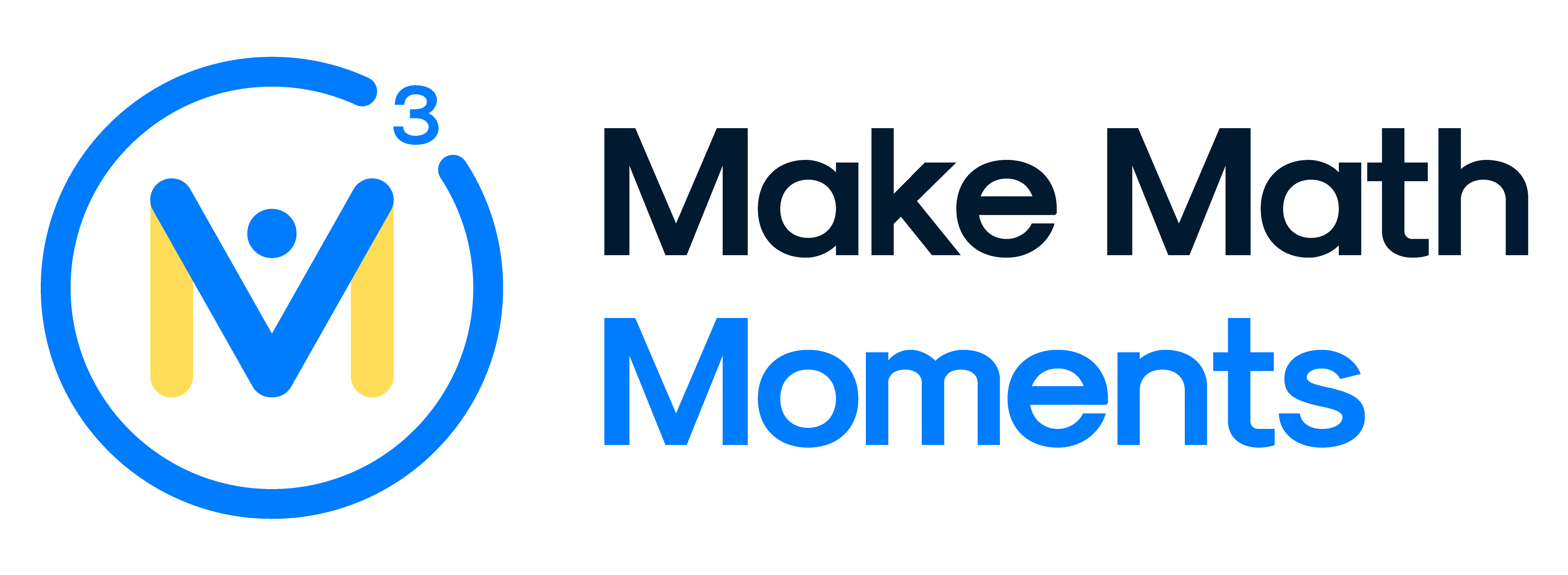



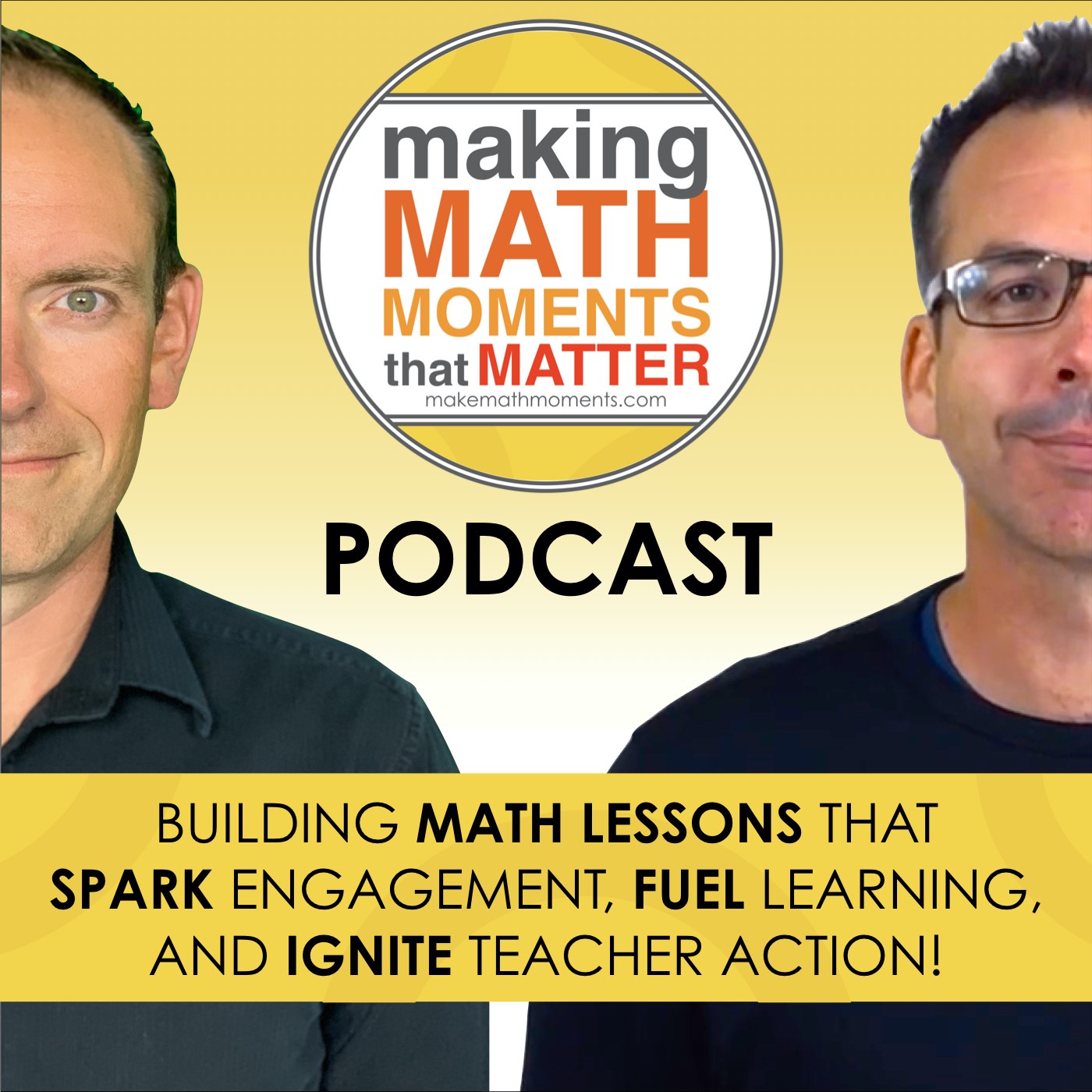
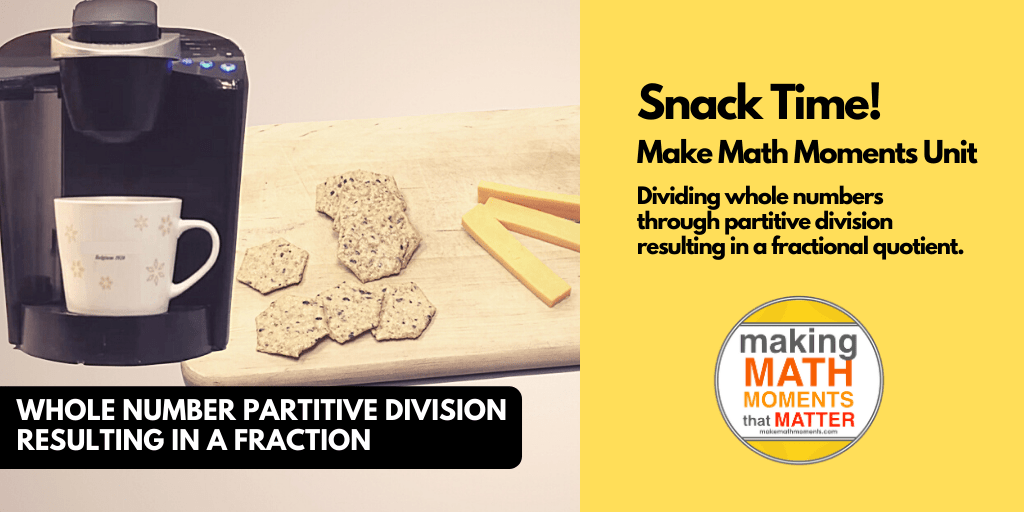

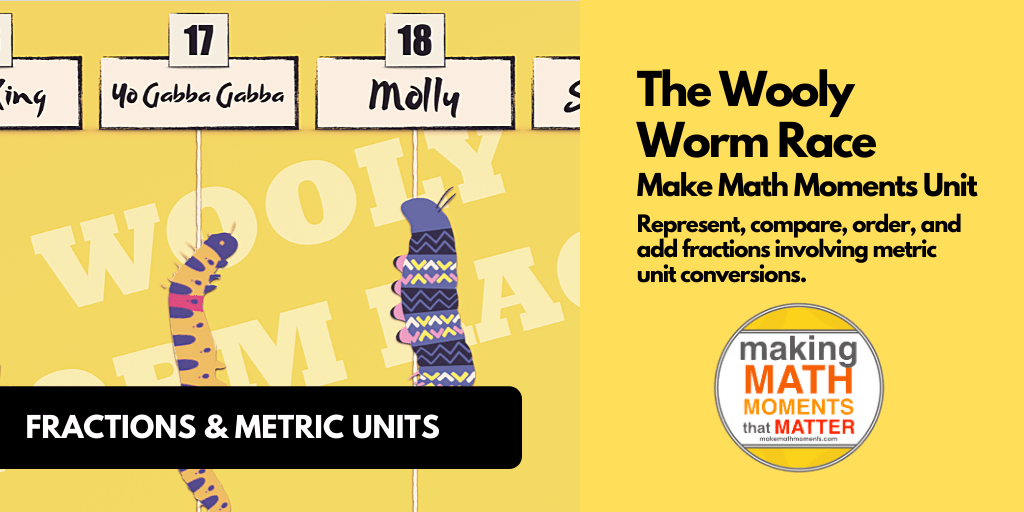
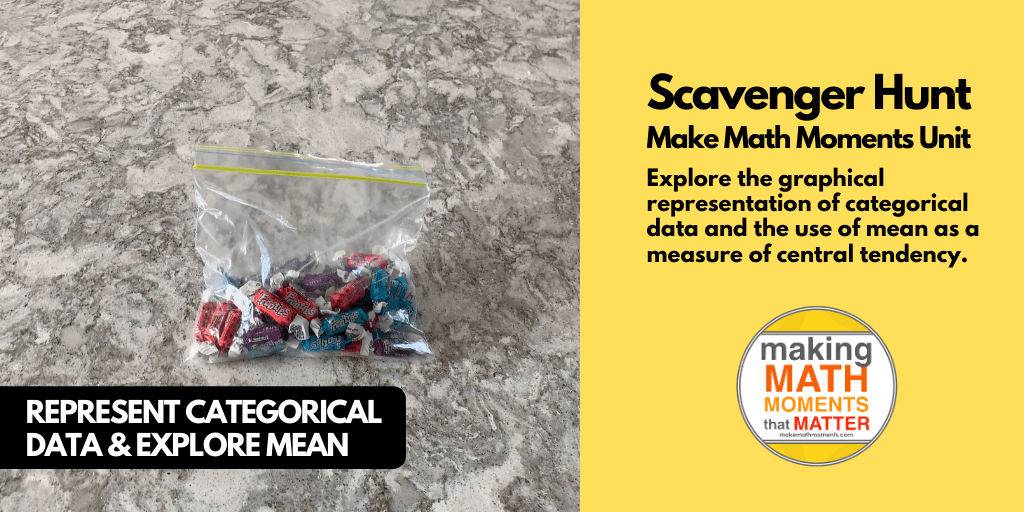

0 Comments